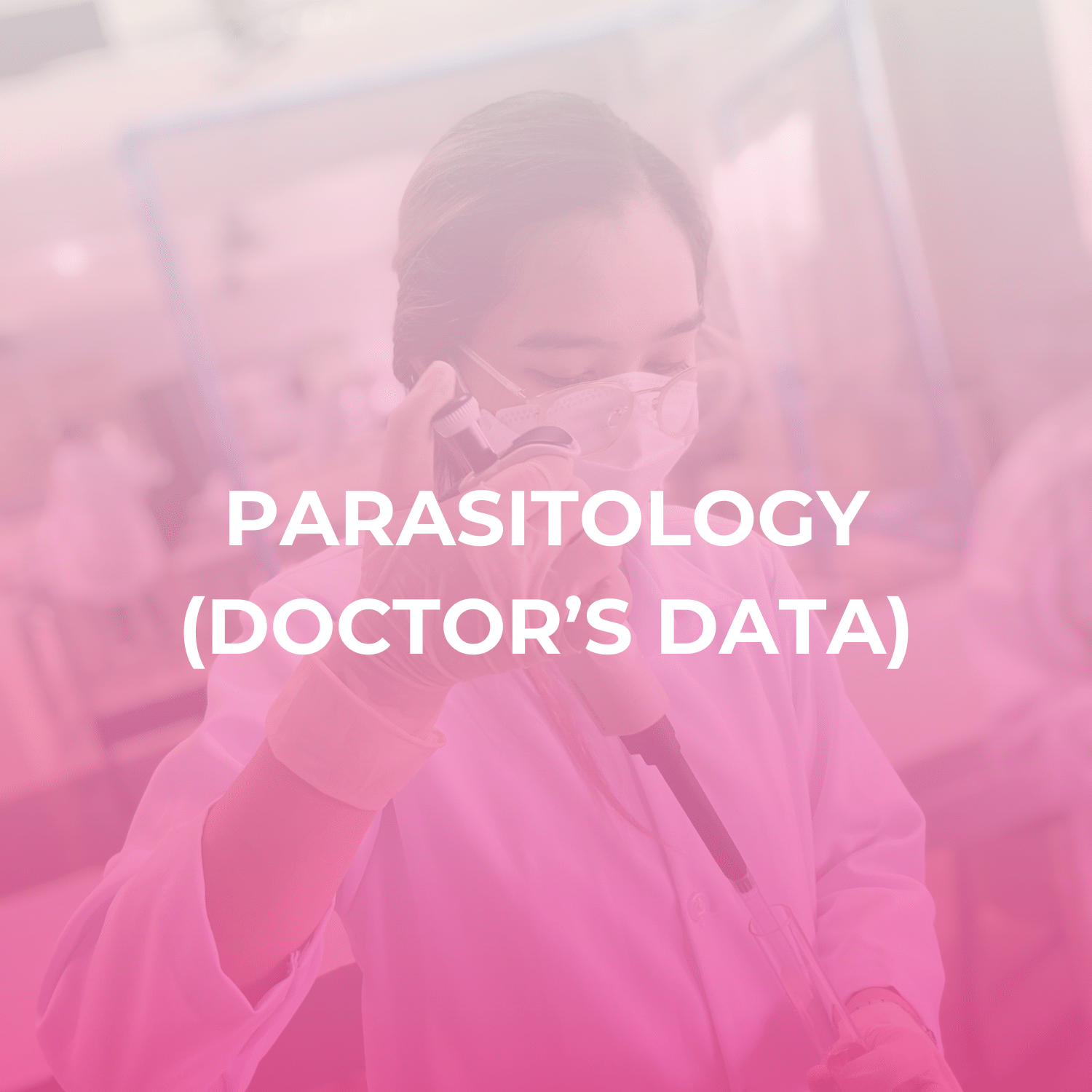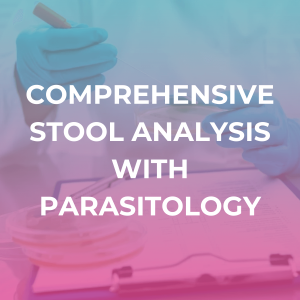Parasitology
$229.00
Signs and symptoms of parasitic infection often resemble those of other diseases. These include constipation, diarrhea, bloating, gas, irritable bowel syndrome, anema, skin lesions, difficulty with sleep, malnutrition, and decreased immune function. This stool test is useful after completion of a parasitic protocol to confirm efficacy of treatment.
The Parasitology profile includes testing by PCR and microscopy and can be performed on a one-, two- or three-day collection.
Parasites can be the missing diagnosis in the genesis of many chronic health problems, including diseases of the gastrointestinal tract and endocrine system.”
While parasitic infection may be an underlying etiological factor in several chronic disease processes, doctors often do not consider the potential for parasitic involvement because signs and symptoms of parasitic infection often resemble those of other diseases. However, it has been shown that parasite testing is a reasonable approach to the detection of causative agents for chronic gastrointestinal disorders.
Most Americans are inclined to believe that parasitic infection is a rare and exotic occurrence, limited to those who have traveled to distant, tropical lands. However, for a number of reasons, there has been an increase in the incidence of parasitic infection in this country. These may include:
- Contamination of the water supply
- Increased use of daycare centers
- Increased travel to, and visits from, countries where parasitic infection is endemic
- Household pets
- Consumption of exotic and uncooked foods
- Antibiotic use
- Changing sexual mores
Signs and symptoms of parasitic infection vary from one individual to another. The more common are constipation, diarrhea, bloating, gas, symptoms of irritable bowel syndrome, arthralgias, myalgias, anemia, increased allergic reactions, skin lesions, agitation and anxiety, difficulty with sleep, decreased energy, malnutrition and decreased immune function.
Infection can occur by four different pathways. These routes include:
- Contaminated food or water
- Insect vectors
- Sexual contact
- Passage through the skin and nose








